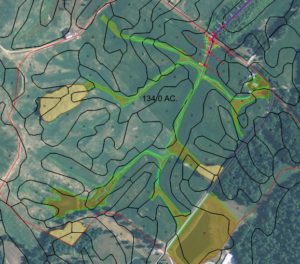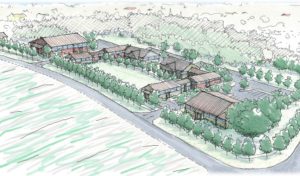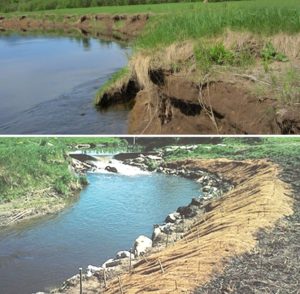Land Planning and Management
DTE provides site planning and management services to beautify and enhance property value, to minimize project related impacts to natural resources, to improve fish and wildlife habitat and to bring land use or construction activities into compliance with environmental laws. DTE works with local governments and land trusts as well as individual landowners and developers with design-build services, regulatory guidance, construction planning and site stabilization, and with natural resources enhancement and landscaping services. Through use of sound ecological principals and planning, DTE strives to restore or improve form and function of natural systems. And, through regulatory guidance, DTE manages compliance issues for the client.
DTE provides guidance for compliance with Environmental Laws, such as the Clean Water Act (CWA), the Endangered Species Act (ESA), the National Environmental Policy Act (NEPA) and others. We coordinate compliance activities with agencies on Federal, State, County/City and local levels, and prepare permits and project documentation. In this process, we conduct meetings and scoping with stakeholders in early stages to determine laws and regulations that apply to a particular action or land plan, and perform field work and services for regulatory compliance and mitigation. DTE also coordinates with operators through all project phases, managing Regulatory Compliance as well as monitoring Mitigation Measures through to successful completion.

Land & Natural Resources Planning and Management
- Water Resources Planning and Watershed Analysis
- Land Management and Natural Resources Assessment
- Conservation Easements and Set-aside Planning
- Urban Forestry
- Forest and Timber Management Plans
- Woodlot Management
- Water Usage Evaluations for Agriculture
- Landscape and Water Use Analysis
- Wildlife Health and Habitat Management Plans
- Sensitive Species and Habitats Conservation Planning

Land Development Planning
- Regulatory Guidance in the Planning & Design phases
- Planning in accordance with LID (Low Impact Development) Principles
- Land Use Planning and Management (plan preparation and implementation)
- Coordination with Agencies to meet Regulatory Guidelines
- NEPA (EA, EIS), CWA (404 and 401 permitting), and ESA (7 and 10)
- Watershed Analysis and Hydrology Studies (pre and post-construction analysis)
- Mitigation Planning, Implementation and Monitoring
- Post-development Restorations – Site Improvements/Enhancements

Regulatory Guidance and Project Permitting
- Procurement of Aid/Tax-Incentives for Wildlife/ Habitat Conservation Projects
- Pre-development Planning & Design Consultations
- General Construction Permits (preparation and submittal)
- Guidance regarding Federal, State and Local Environmental Regulations
- Jurisdictional Waters Delineation and Permitting (Streams and Wetlands)
- NPDES Erosion Control and Stormwater Management (permitting, installation, monitoring)
- Stream Restoration and Mitigation Wetlands Construction (design-build)
- Installation and Monitoring for Required Mitigations
- Monitoring and Reporting of Compliance Measures and Regulatory Milestones
